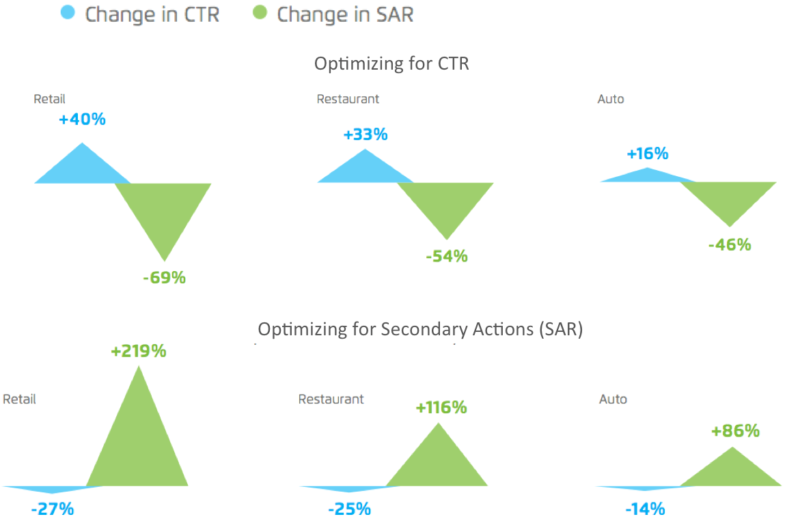Study Shows CTRs A False Metric For Mobile Ad Performance
A new mobile advertising study, commissioned by xAd and carried out by Nielsen, holds some important and perhaps surprising findings for marketers. Many people have long known that the click-through (CTR) is not a very useful metric for display ads and mobile display ads in particular. This study proves it. At very best CTR may be a directional […]

A new mobile advertising study, commissioned by xAd and carried out by Nielsen, holds some important and perhaps surprising findings for marketers. Many people have long known that the click-through (CTR) is not a very useful metric for display ads and mobile display ads in particular. This study proves it.
At very best CTR may be a directional indicator of consumer awareness and interest. But if CTR is used at all it should not be used by itself.
The ad-performance study ran on xAd’s platform and measured 80 campaigns featuring 12 national brands. There were a total of 200 million impressions measured across all the campaigns, which were run during the first half of this year. Location analytics provider Placed was used to measure store visits in response to the ads.
Below are the top-level findings:
- CTR by itself is a poor indicator of ad performance and may be “completely unrelated, or even negatively correlated, to the other measures capturing metrics such as calls, directions and store visits”
- As mobile display campaigns are optimized for CTR, it negatively impacts secondary actions such as calls and directions
- Lower CTRs were often associated with the highest offline in-store visitation rates
Many people have an “intellectual understanding” of the problems with CTR-based measurement for mobile display ads — mobile search was not part of this study — yet it has been difficult for marketers to explore let alone adopt alternative success metrics. Many marketers remain “addicted to the click.”

The graphic above from the study compares three campaigns using CTR, secondary actions (calls, directions) and store visit lift as metrics. Secondary actions and, certainly, store visits are more representative of actual ad performance and purchase intent. CTRs were not positively correlated with either of the two other metrics.
The report points out that if marketers and brands are relying exclusively on CTR they’re not getting an accurate picture of which ads actually deliver true engagement and are “working.” In addition the risk of inadvertent clicks (the “fat finger” problem) is relatively high, casting further doubt on CTR.
Beyond simply measuring clicks, many marketers may be trying to optimize mobile display ads to generate clicks. This is still a common practice. What the study shows is that it’s a mistake.
Optimizing for CTR had an adverse impact on secondary actions and store visits. Conversely, optimizing for secondary actions tended to depress CTR. Thus mobile display advertisers should abandon click-optimization practices immediately.

You can obtain a copy of the full report here (registration required).
Contributing authors are invited to create content for MarTech and are chosen for their expertise and contribution to the martech community. Our contributors work under the oversight of the editorial staff and contributions are checked for quality and relevance to our readers. MarTech is owned by Semrush. Contributor was not asked to make any direct or indirect mentions of Semrush. The opinions they express are their own.
Related stories
New on MarTech